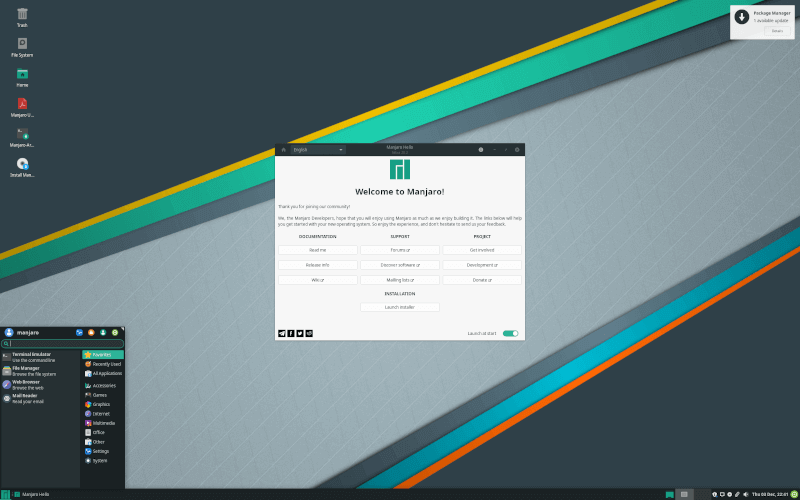Based on Arch Linux, Manjaro Linux is a desktop-oriented and user-friendly Linux distribution designed for desktop lovers and Linux users with a keen eye for an exciting UI experience.
Manjaro is a rolling release and is entirely open source and free to download. It is a versatile distribution that can be used for gaming, app development, and even for basic desktop tasks at home or in the office. It is easy to install and provides basic applications out-of-the-box to help you get started.
In this guide, we explore the journey that Manjaro had taken from when it was first released to where it is currently.

History of Manjaro Linux
Manjaro Linux first came out on July 10, 2011, slightly over a decade after penning down this article. The first version was version 0.1
Slightly over a year later in August 2012, version 0.8 was released with the introduction of Xfce and KDE Plasma editions which run on Kernel 3.4.9.
Throughout 2013, Manjaro was in a Beta phase and it was occasioned by the release of Manjaro Askella which is the first version to use an LTS kernel which was 3.4.59.
Key elements that would make it a complete system were incorporated. These included a GUI installer and a Pacman package manager with front-end installers such as Pamac for Xfce and Octopi for the OpenBox edition.
Other crucial components included Manjaro hardware detection for identification and detection of various hardware components as well as video drivers and Manjaro Settings Manager which offers a series of settings including user management, kernel management, and management of drivers.
In 2014, support for LVM and LUKS encryption was included with improved UEFI support and filesystem handling and detection.
At the close of August 2015, Manjaro developers made changes to the Majaro versioning scheme. Instead of numbers, they switched to month and year designations.
This started with Manjaro Bellatrix (version 15.09) which was released in August 2015. This was later followed by Capella (version 15.12) released in December 2015 with a new Calameres installer and updated packages.
In 2017, the first Manjaro version (version 17.0) with GNOME desktop environment was made available. In September of the same year, support for the i686 architecture was discontinued due to its decreasing popularity.
In September 2019, the Manjaro GmbH & Co. KG company was founded.
In 2020 started supporting the ZFS filesystem and building AUR (Arch User Repository) packages during an upgrade.
The latest version of Manjaro is Manjaro 21.3 codenamed Ruah.
Manjaro Repositories
Manjaro Linux uses a set of three repositories:
- Stable – Comprises packages that are considered stable by the development team.
- Unstable – This contains the very latest Arch Linux packages. The repository is synched multiple times a day with Arch package releases.
- Testing – Packages from the Unstable repository are passed to the Testing repository after which they are thoroughly tested before they make it to the stable repository.
That was a walkthrough on the history of Manjaro Linux. I hope it provided insights into how far Manjaro has come since its inception.

Great distro. I utilize it at home and at work.